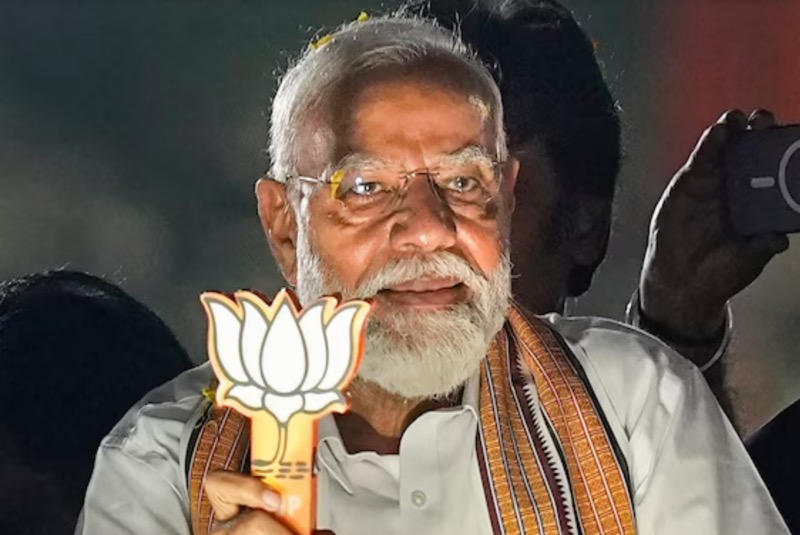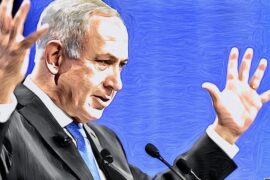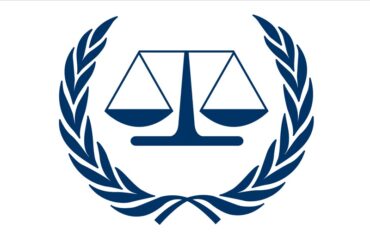On a crisp winter morning in February 2023, I met one of my South Delhi neighbours, a lawyer in India’s supreme court, in a local cafe. As an avid promoter of religious minority rights, known for his commitment to the principles of equality that were enshrined in the constitution after India gained independence in 1947, I am taken aback by the gravity of the fears this lawyer reveals to me over coffee. He worries not only about the future of India’s legal system but the country itself:
International news describes India as the world’s largest democracy – but this democracy is rotting from within. Our rule of law is under attack from our own government, and the world does not see this.
The lawyer’s pessimism had deepened with the recent news that the Indian government was pushing for a more substantial role in judicial appointments to the Supreme Court. Weeks earlier, it had blocked the nominations of four new judges proposed by a ‘collegium’ made up of India’s five most senior current supreme court judges.
The lawyer explained how this collegium had been an important safeguard of Indian judicial independence for the past 25 years. Now, however, the government was claiming that, ‘for reasons of transparency,’ it should have a bigger say in the selection of supreme court judges. A tone of despair in his voice, my coffee companion concluded:
This isn’t about transparency. This is yet another instance of this government trying to erode the rule of law from within. Soon, we will be a country run by legal mafia authoritarianism.
Eradication of democracy
India is a global power on the rise. In April 2023, the UN announced it had overtaken China as the world’s most populous nation. During his visit to the US in June 2023, India’s prime minister, Narendra Modi, invited world leaders to a yoga session on the White House lawn. A few months later, he hosted the G20 summit of the world’s most powerful leaders in Delhi.
Under Modi, India has worked hard to develop a global image as a nation that combines economic and technological innovation with a deep respect for ancient religious practices. This image was cemented by the inauguration of a huge new Hindu temple in the northern city of Ayodhya in January 2024. The inauguration lasted several days and saw diplomats, Bollywood actors and internationally renowned Hindu religious figures flock to pay their respects.
But behind these glossy images, a different story is unfolding within India – one that government critics say is marked by exclusion, violence, and the gradual eradication of the Indian democratic project.
Since first coming to power in 2014, Modi and his right-wing Bharatiya Janata Party (BJP) have embarked on an agenda of majoritarian Hindu nationalism. Led by the ideology of Hindutva, which perceives India’s history to be inextricably linked with Hindu religious practice, and with the help of a hand-picked committee of advisers, they have pursued a vision of India as a country run by Hindus for Hindus.
Over the past decade, India has seen a proliferation of verbal and physical attacks against religious minorities and Dalits (the lowest caste of people in India, formerly known as “untouchables”). Some BJP politicians have described Muslims as ‘traitors of the nation.’ Since Modi came to power, lynchings of Muslims and Dalits by vigilante groups who condemn the skinning of cattle and the transport or consumption of beef are reported to have increased significantly.
At the same time, many civic voices critical of the government have been silenced: journalists, academics, and politicians concerned with the increasing repression of minorities and the gradual erosion of India’s democratic structure have had their Twitter accounts blocked, their homes raided, and in some cases have been jailed. Recently, Rahul Gandhi, India’s principal opposition leader, complained that his Congress party is being ‘crippled’ by state tax demands that have led to the freezing of its bank accounts.
However, one aspect of Modi’s growing power has received comparatively little attention: his creeping capture of India’s legal machinery. As a legal anthropologist who has spent the past ten years researching human rights and hate crime law in India, I have witnessed the erosion of the country’s once robustly democratic legal system by Hindutva forces. The latest example is the BJP’s introduction of a new criminal legal structure in India, which will come into force in July 2024.
In Modi’s Hindutva version of India, law now exists on two parallel planes. Constitutionally, it remains a secular democracy, committed to the idea of social and political equality. Yet on the level of policing, judicial interpretation, and – increasingly – legislatively, Indian state law has become a site where majoritarian Hindutva ideologies have reshaped ideas of justice and belonging.
With Modi an overwhelming favourite to win the Indian general election, which begins on April 19, understanding what is happening to the country’s legal system – and how much further it could go in his next term of office – feels important not only for India, but for the world. It illuminates how right-wing regimes are using a playbook to silently dismantle democracy from within, under the veneer of legal legitimacy. This is the story of how you build an authoritarian state, the legal way.
Step 1: reinterpret existing laws
In February 2022, a human rights activist from the northern Indian state of Rajasthan I’ll call Tara* was arrested and sent to jail for four days. Tara told me ten police officers showed up in the middle of the night to inform him that he had been accused of forms of hate speech. Under sections 153A and 295 of the Indian penal code (first introduced in 1860 by the British colonial regime), he was charged with ‘promoting enmity’ between different religious groups and ‘insulting the religious sentiments of Hindus.’
Although Tara was eventually released on bail, his time in prison, the brutality he experienced at the hands of the arresting police officers and the threat of further court proceedings have left deep physical and psychological scars. Over the course of multiple conversations in the autumn of 2023, he revealed that he still found it difficult to sleep at night, for fear the police would return and take him away to prison again.
To make matters more confusing, Tara is a devout Hindu. He belongs to India’s Dalit community, the lowest in the Hindu caste hierarchy. In his village, many Dalits worship a local Hindu deity, Ramdev Pir – a legendary warrior of the high-ranking Rajput caste who was said to be close to his adopted sister, a Dalit, and therefore is revered both by upper-caste Rajput and Dalit Hindu groups (plus some Muslim followers of the Sufi branch of Islam).
But Rajputs in the area would not allow Dalits or Muslims into the local Ramdev temple. Determined to change things, Tara called a meeting to discuss the issue. During the meeting, he publicly proclaimed that Ramdev is a deity who belongs to all Hindus, and even Muslims – not just upper-caste Rajputs. That same night, the police arrived at his door.
When we discussed his treatment, Tara’s reflections were nuanced, showing a deep understanding of the changing way India’s criminal code is being enforced:
The fact that Dalits are discriminated against by upper-caste Hindus is not new in itself … but what we are seeing now under this Hindu nationalist government is that sections of the criminal code are being interpreted in new ways to further exclude communities like Dalits. Now sections like 153A and 295 of the Indian penal code are being used by higher-caste Hindus to claim that marginalised groups who point out exclusion or discrimination are insulting ‘real’ upper-caste Hindus.
A prominent human rights lawyer in Delhi describes Tara’s treatment as the ‘Hindutva reinterpretation of criminal terminologies.’ The British Raj introduced section 153 of the Indian penal code (IPC) to prevent public unrest between different religious communities. But now, the lawyer argues, Hindutva supporters are increasingly ‘weaponising’ it and other sections against minority groups who try to raise awareness about the forms of violence or exclusion they are experiencing:
In the Hindutva logic, when a marginalised person points out that they are experiencing violence or discrimination by powerful Hindu groups, this is an ‘insult’ and amounts to a declaration of hostility against them.
Tara’s experience is not an isolated incident. In January 2024, police in the north-eastern state of Manipur filed complaints against the Editors Guild of India, again under IPC section 153, for reporting on the ethnic violence towards the Christian minority Kuki-Zo tribes by the Hindu majority Meitei community. According to the complaints, media reporting on the violence was further fanning the flames of conflict between the two communities, so should be prohibited.
For Tara, who now spends his time travelling around Rajasthan – both to raise awareness about the treatment of minorities under the Modi regime and because, after his arrest, he no longer likes to stay in his home for extended periods – this is a sign of the very twisted times in India. He complained that:
Hindus attacking marginalised groups is no longer discrimination in India. But stating that powerful Hindu groups are attacking minorities is now hate speech or incitement.
Step 2: introduce new laws
The Hindutva political project contradicts the principles of secularism, equality and liberty enshrined in India’s constitution, which came into effect on January 26, 1950. Centrally drafted by Bhimrao Ramji Ambedkar, a legal scholar from the Dalit community, the constitution aimed to set up postcolonial India as a democracy defined by profound respect for social, political and religious diversity, and guided by the principle of non-discrimination.
The second element of Modi’s strategy is the introduction of new anti-minority laws and criminal codes. He understands that the reinterpretation of existing legal measures is insufficient to build a majoritarian state, where Hindus as the largest religious community can disproportionately determine policy decisions. Therefore, his government has expended substantial resources introducing a series of new legal measures that have gradually pushed Muslims, in particular, to the social margins. Shortly after being re-elected for a second term in 2019, for example, Modi’s government revoked the constitutional autonomy of Jammu and Kashmir, India’s only Muslim-majority state.
At both national and state levels, the list of anti-minority laws introduced during Modi’s reign is bewilderingly long. Just one example is the Prevention of Unlawful Conversion of Religion Act – introduced in India’s most populous state, Uttar Pradesh, in 2021 – which has enabled the easy arrest of interfaith couples, especially young Muslim men accused of seducing Hindu women, as part of a ‘love jihad.’
But the most blatant anti-minority legislation is the 2019 Citizenship (Amendment) Act (CAA), which denies Muslim immigrants in India the same citizenship pathways as other religious groups. Couched in the language of national protection and Hindu rights, the CAA was quickly declared a ‘fundamentally discriminatory’ law by the UN Commissioner for Human Rights.
Critics feared that along with the National Register of Citizens, launched in 2003 to keep track of all ‘legitimate’ Indian citizens, the CAA would leave thousands of Muslims on Indian soil stateless. As a result, its introduction sparked an outbreak of Hindu-Muslim clashes now known as the Delhi riots, in which at least 53 people were killed (of which 38 were Muslim and 15 Hindu) and hundreds more injured over four days of violence in February 2020.
“One day you wake up and are told that your whole community now officially counts as secondary Indian citizens,” Rashid*, a student at Jamia Millia University in New Delhi, told me in 2023. “Then, within the blink of an eye, you are engulfed by violence just because you challenged that assumption. And the police do nothing. Why? Because we all know that the orders from above are to let us Muslim ‘traitors’ die.”
Rashid had been part of the peaceful anti-CAA protests in Delhi that began in December 2019. The following February, the situation escalated when Hindu mobs, reportedly unhindered by the Delhi police, began to attack Muslim protesters after some BJP politicians had again publicly called them ‘traitors.’ Hindu crowds burned down Muslim homes and businesses, and a video emerged apparently showing five Muslim men being beaten by policemen while forced to sing the Indian national anthem. One of them reportedly died two days later.
The impact of the Delhi riots on Muslim communities across India has been profound. According to a Muslim lawyer who works in the Supreme Court, the introduction of the CAA and subsequent Delhi riots sent not one but several messages to Indian Muslims.
First, we are told we don’t belong to India in the way other religious groups do. Then, we better not challenge our partial inclusion because it will result in our death. And also, law enforcement will not protect us. Finally, we are shown that those who want to help Muslims fight for their rights will see their careers impacted.
Following the Delhi riots, Justice S Muralidhar, a Delhi high court judge, convened an emergency hearing in which he directed Delhi police to file complaints against the BJP politicians who had called the Muslim protesters traitors. Within 24 hours, the Indian government announced Muralidhar’s transfer to a different high court, confirming that he would no longer be presiding over the Delhi riot case.
Step 3: silence the judges
The high court judge’s rapid transfer offers a glimpse into the third strategy that India’s government has used to cement power and undermine democratic structures: the silencing of a once-independent, critical judiciary.
In April 2023, I returned to Delhi from the UK to conduct ethnographic work on hate speech hearings in the Indian Supreme Court. I found an apartment in a neighbourhood where many lawyers had their chambers and soon established a network of local advocates who fed me information about ongoing cases and relevant Supreme Court hearings.
I was at home one day when one of them urgently directed me to watch a livestream of a Supreme Court hearing. It concerned a petition submitted by a group of concerned human rights and supreme court advocates, which detailed how the government of the Indian state of Maharashtra had repeatedly failed to respond to public and extremely bloody hate speeches by a small group of Hindu radicals.
As I watched, the proceedings were intruded on by India’s solicitor general, the country’s second-highest legal official and adviser to the government. Interrupting the presiding judge, who belonged to India’s Christian minority, the solicitor general accused the court of bias for hearing a petition that only involved hate speech against Muslims. He demanded to know why the court was not investigating hate speeches against Hindus: ‘Let us not be selective!’ he chastised the bench.
As proceedings descended into chaos, the judge was forced to reschedule the case for another day. The next morning, some news outlets reported claims that this Christian judge had shown pro-Muslim bias, and had even smiled at the suggestion of a possible genocide against upper-class Hindus by Muslims. The lawyer who had submitted the petition was left frustrated and furious by these events:
By the end, no one could even remember that this case was about stopping calls for genocide against Muslims. This is what the government does: create chaos, ignore proper legal procedure, and delegitimise courts through a theatre of distractions.
Step 4: revise history
According to the authoritarian playbook that has emerged around the world, delegitimising critical courtroom voices is still not enough to dismantle a democracy. To achieve complete control over public opinion, one final ingredient is required: one must use the now-subordinated legal system to promote a version of national history that falls in line with the government’s social and political vision. Because when court judgments enter the public record, they have the power to shape public perception and collective memory.
In Modi’s India, the best example of this is the Supreme Court’s 2019 ruling in the dispute around the Babri Masjid mosque in Ayodhya, which allowed Modi to inaugurate a glistening mega-temple made of white marble and dedicated to the Hindu deity Ram on this disputed site. It was a ruling which some lawyers I spoke to considered so unconstitutional that it shook their faith in the entire legal system. One up-and-coming Supreme Court lawyer told me in May 2023:
Before the Ayodhya judgment, I was a naive young lawyer fresh out of school who believed that if you present a court with the right evidence, respect the constitution and are argumentatively and procedurally savvy, you win a case. But the Ayodhya judgment broke my faith.
He went on to claim that the Supreme Court had shown ‘such a complete disrespect for evidence in that case, in order to validate Hindu demands, that [he] almost quit altogether.’ The lawyer sighed heavily:
Judgments matter … They define how ordinary people see the world. And this one has made it very clear to everyone that in Hindutva India, there is no space for Muslim claims.
The Babri Masjid mosque was built in the early 16th century during the reign of the Mughal empire’s founder, Babur. But in 1853, a Hindu sect claimed it had been built on the site of a previous Hindu temple dedicated to the Hindu deity, Lord Ram. After brewing for more than a century, the dispute escalated in the 1990s when the then-BJP leader, Lal Krishna Advani, spearheaded a national campaign to build a new Ram temple on the site. Inspired by his claim, more than 10,000 Hindu nationalists gathered in Ayodhya on December 6, 1992 and demolished the mosque. Following its destruction, violent Hindu-Muslim riots broke out across India, and more than 2,000 people died.
The dispute over the site ended up in the Supreme Court which, in November 2019, published a nuanced 1,000-page ruling that, while emphasising the importance of being guided by secular constitutional procedure, observed that ‘in matters of faith and belief, the absence of evidence may not be evidence of absence.’ It therefore awarded the disputed plot to the Hindu parties for the construction of a temple, while asking the government to find Muslims a ‘suitable’ alternative plot.
Critics of the Ayodhya judgment argue that it gave prominence to the beliefs of one section of the population, and privileged a mythic Hindu version of Indian history over what scientific evidence indicated – thus signifying a new direction in Indian politics and law.
In February 2023, over coffee, my neighbour, the senior lawyer from India’s supreme court, explained the full significance of the judgment from his perspective:
It was more than a clever authoritarian propaganda plot that messes a little with historical claims. Ayodhya was a systematic rewriting of ancient Indian history by the highest court of our land.
Many legal experts suggest the Ayodhya judgment was no accident, but the result of a systematic government campaign to fill open positions on the supreme court bench with Hindu nationalist sympathisers. This suggestion is supported by an analysis of supreme court data from 2004 onwards by India’s Campaign for Judicial Accountability, which found that the number of supreme court justices who explicitly use Hindu faith-based arguments rather than constitutional ones in their judgments had increased from zero to nine in the years since Modi first became prime minister in 2014.
“We still see glimpses of an independent Indian judiciary,” the senior lawyer told me when we last spoke in November 2023, “but they are becoming fewer by the day … I worry that soon our constitutional courts will fall silent.”
Authoritarian leaders shape the nation they want
Tara, the Dalit human rights activist, is still recovering psychologically from the effects of his midnight police arrest and brief imprisonment. He, along with many of the lawyers I have interviewed, warns that if Modi is re-elected, his BJP government plans to rewrite the constitution to reflect their vision of India as a country governed by Hindu ideologies and practices.
In December 2023, we discussed B.R. Ambedkar, the person with ultimate responsibility for the drafting of India’s constitution shortly after independence.
“He was a Dalit who had suffered many indignities in his life,” Tara reminded me, explaining the significance of this:
Therefore, our Indian constitution is infused with the spirit of equality and social justice for everyone. The preamble says: ‘We, the people of India, secure justice, liberty, equality and fraternity for all citizens.’ All citizens – not just Hindus. The attempt to make India a Hindu nation and bend law to this agenda is unconstitutional.
Such concerns have deepened with the government’s announcement in February 2024 that the entire body of Indian criminal law – penal code, code of criminal procedure, and evidence act – will be replaced in July with a new set of criminal codes that will increase police powers and facilitate government surveillance.
According to a lawyer who works night and day for the protection of India’s most marginalised groups, if the Indian constitution is also rewritten – or ‘rectified,’ as one BJP MP recently suggested – then:
India’s transformation into a Hindu rashtra [Hindu kingdom] will be complete. Everything we value about the constitution now, everything that once made India such an exciting democratic project – the emphasis on equality and diversity – will be gone.
Of course, this narrative is not unique to India. Authoritarian leaders across the world do not simply defy laws; they use existing legal machinery to shape the nation they want. In 2018, the former Brazilian president, Jair Bolsonaro, summarised this idea succinctly. “The law,” he said, “should exist to defend majorities, and minorities must conform to that or disappear.”
In December 2023, independent news organisations in Hungary warned that a new law had been introduced to undermine critical independent media voices. Just like in India, Victor Orban’s government has argued that criticisms of the government must be undercut in order to maintain peace.
Delegitimising an independent judiciary is another frequent authoritarian ploy. In 2017, former US president Donald Trump accused a federal judge of putting America ‘in peril’ by blocking his proposed travel ban for Muslims. Here too, the judiciary’s attempt to abide by constitutional principles was portrayed as ‘anti-national.’
And authoritarian governments have always been adept at rewriting the past in line with their own cause. When Russia’s president, Vladimir Putin, annexed Crimea in 2014, he claimed that predominantly Russian areas of Ukraine had come under the rule of neo-Nazi forces and needed to be liberated. While there was little evidence to support this narrative, it was nonetheless effective in creating a sense of threat and urgency, which also garnered support for his subsequent invasion of Ukraine.
At its heart, any authoritarian project – whether in the US, Russia or India – must set out to tackle the country’s legal system. To achieve the desired level of control, the project’s leaders know they must bring supposedly justice-producing institutions like courts and police into line with their political ideologies, or their ambitions for the country will fail.
Most worryingly, as Modi and other authoritarian populists around the world take part in what is dubbed ‘the biggest election year in history,’ we would do well to remember that increasingly, even if something is declared legal, it is not necessarily democratic, moral or just.
*Some names in this article have been changed to protect the anonymity of the interviewees. This story was first published in The Conversation.
-30-
Copyright©Madras Courier, All Rights Reserved. You may share using our article tools. Please don't cut articles from madrascourier.com and redistribute by email, post to the web, mobile phone or social media.Please send in your feed back and comments to [email protected]











